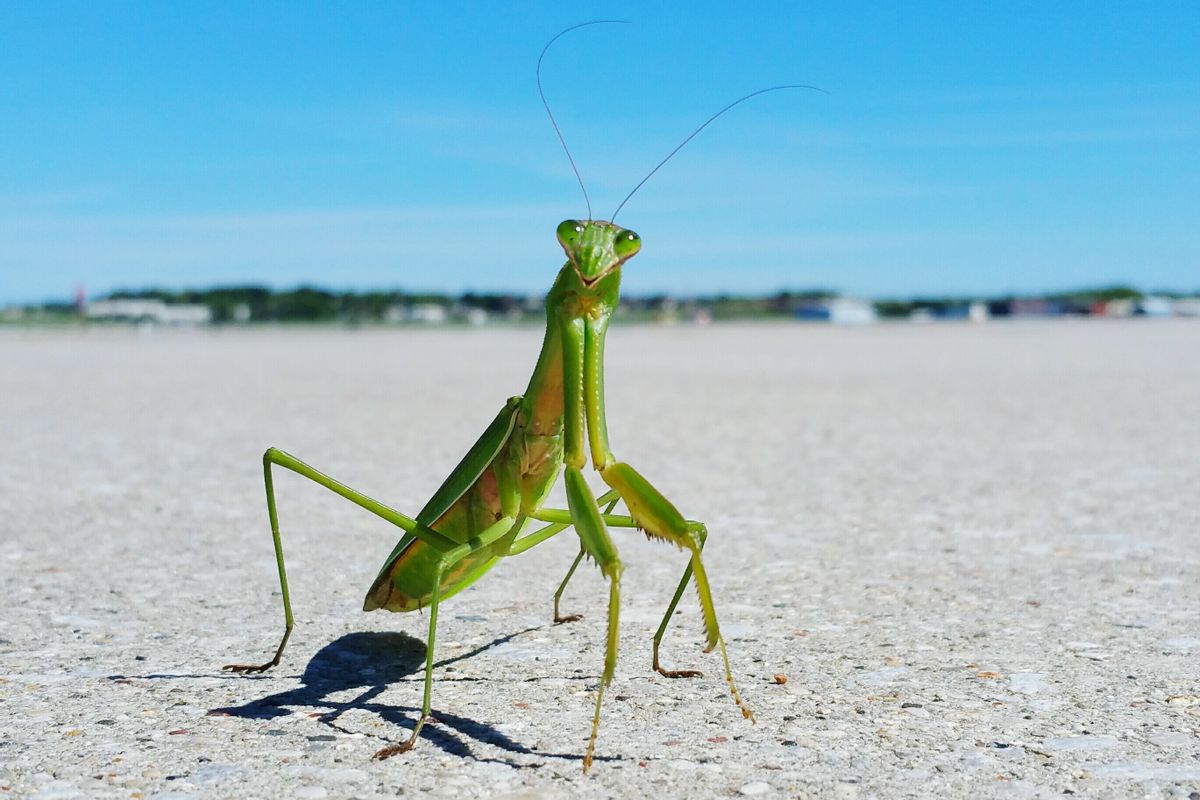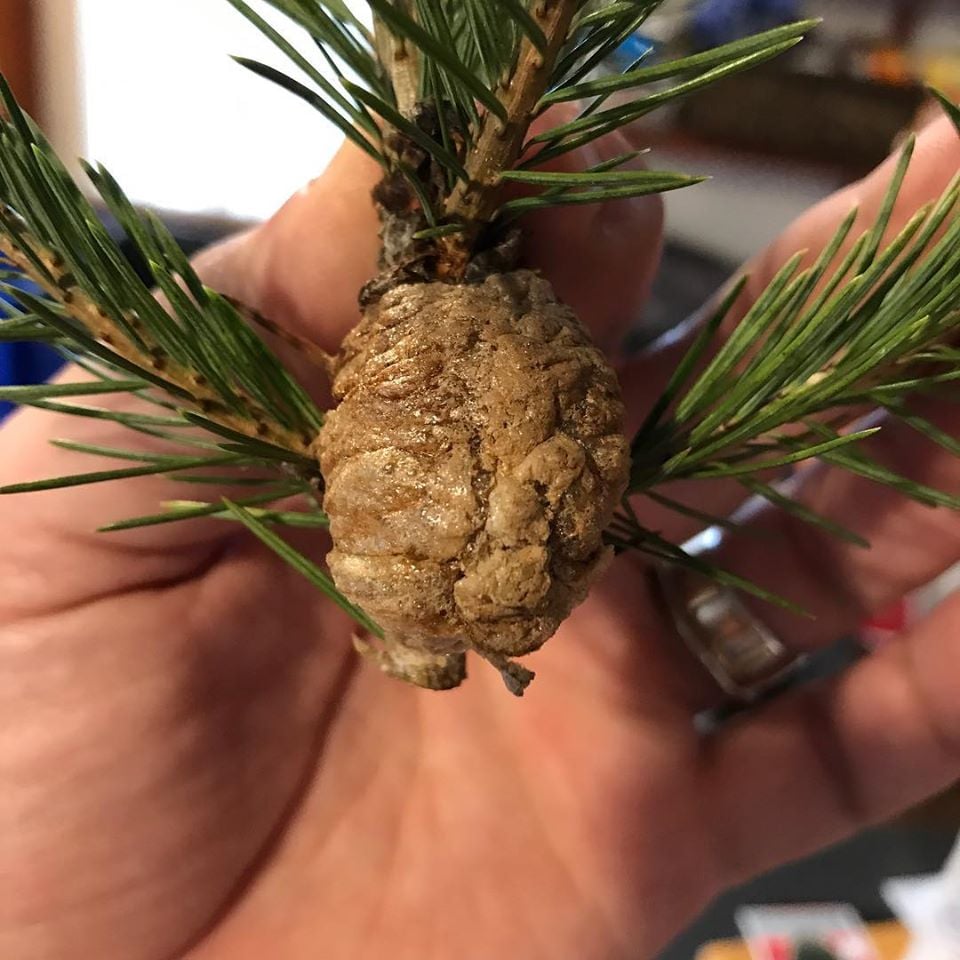Praying mantis egg cases have been found on occasion on Christmas trees.
However, this is not a common or dangerous problem. Christmas tree farms take precautions to prevent "harmless hitchhikers." By one estimate, only 1 in 100,000 Christmas trees has a post-harvest pest.
A photograph supposedly showing a praying mantis egg case on the limb of a Christmas tree is frequently shared on social media during the holiday season:
While this picture truly shows a praying mantis egg case on a Christmas tree (it was originally posted to Facebook in December 2017), social media posts and news articles about this potential pest problem may have given readers the false impression that this was a common or dangerous occurrence.
Chris Enroth, a horticulture educator at the University of Illinois Extension, writes that "these Christmas tree post-harvest pests (a reference to any insect, not just praying mantis eggs) are rare, occurring in 1 out of 100,000 cut trees." Doug Hundley, a seasonal spokesperson for the National Christmas Tree Association, also told us that it is "very rare" to find a mantis egg case on a Christmas tree.
Hundley said that Christmas Tree Farms take precautions to reduce the chances of an insect (or "harmless hitchhiker") from making its way from the farm to the home:
Most of these tree growers practice or utilize a pest management system called Integrated Pest Management or IPM.
IPM is utilized in most crops now. Christmas tree production began using it about 25 years ago. IPM practices are developed by University research and taught by Extension programs so the growers can successfully manage pest populations in a smart and environmentally friendly way.
Using IPM (farmers) scout their Christmas tree plantings regularly for pests that are interfering with the health of the trees and to prevent what we call post-harvest pests or harmless hitchhikers.
Although we've found a few old anecdotes about mantis eggs being found on Christmas trees (musician Taylor Swift was tasked with finding mantis eggs at her family Christmas tree farm in her childhood), this potential pest problem really started gaining news coverage in 2017. At the time, the pest control company Safer Brand was causing a stir by claiming that "as many as 25,000 bugs can live in one tree."
Entomologists quickly shot down this claim. Adam Dale, assistant professor for entomology at University of Florida (UF), told MyNews13: "You are not going to have thousands of bugs in your Christmas trees."
Susan Haddock, an agent in pest management for the UF Agricultural Extension, added:
"In over nine years of experience with [the UF Agricultural] Extension, I have never had a client inquiry or problem brought to my attention regarding a serious problem, or even a minor problem, related to insects on Christmas trees."
While there have been a few incidents over the years of people finding mantis eggs on their Christmas trees, this is not a widespread or dangerous problem.


